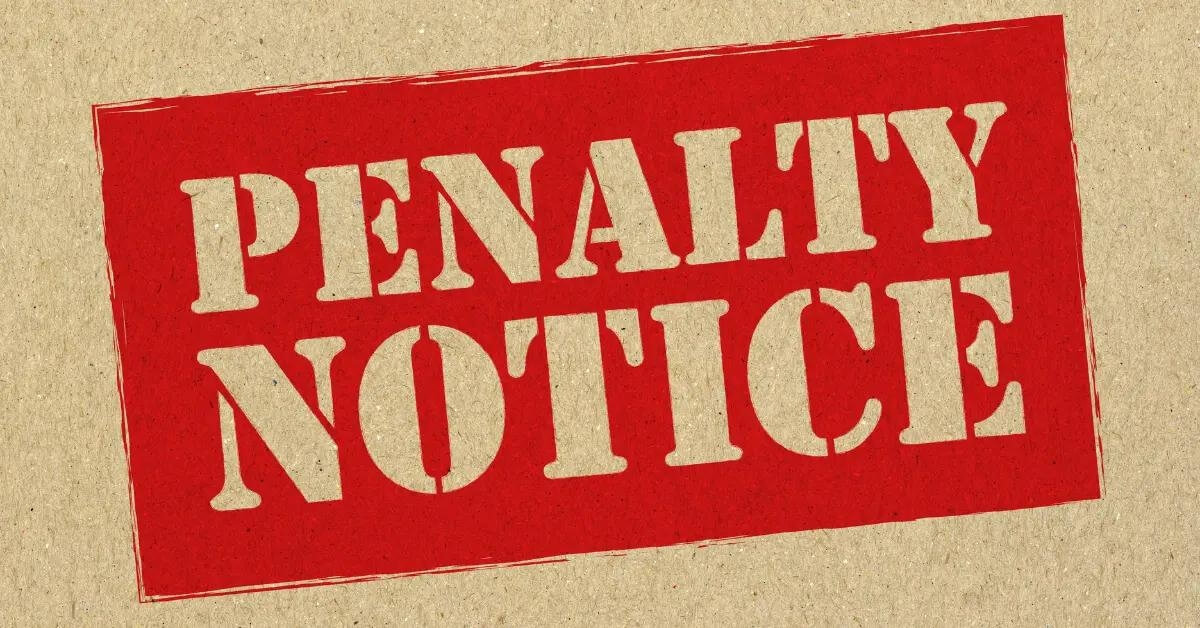Business tax forms can be complicated, especially if you need to make a change to one. Do you need to adjust one you’ve already submitted, such as IRS Form 941?
Employers use Form 941 to report the amount of income tax, Social Security tax, or Medicare tax they withhold from employee paychecks.
This is a quarterly federal tax return document that also allows employers to pay their own share of Social Security or Medicare taxes.
If you’re an employer who needs to make corrections to this form, then you will complete IRS Form 941X. This includes any adjustments required following changes made to COVID-19-related employment tax credits.
The American Rescue Plan (ARP) changed the way employee retention credit should be applied within Form 941. Today, we’re sharing how to use Form 941X to make those changes and ensure you’re following the most recent tax laws when completing your returns.
Understanding the IRS Employee Retention Credit
The IRS employee retention credit debuted under the Coronavirus Aid, Relief, and Economic Security (CARES) Act in March 2020.
It was put in place to motivate employers to keep employees on their payroll, despite the challenges they now faced in the wake of the coronavirus pandemic. To claim the credit, eligible employers reported all of their qualified wages, as well as applicable health insurance costs, to the IRS each quarter.
They would do so using their quarterly employment tax return, which was Form 941 for most companies. The IRS would apply the credit against the employer’s share of Social Security tax. If there was a refundable excess, it would be distributed under normal procedures.
Eligible employers could claim the credit, which was equal to 50% of up to $10,000 in qualifying wages, which included qualifying health plan costs. To qualify, the wages had to have been paid after March 12, 2020, and before January 1, 2021.
This credit was extended under Section 3134 of the Internal Revenue Code, which was enacted by the ARP and amended by the Infrastructure Investment and Jobs Act (enacted November 15, 2021). Through this extension, the IRS employee retention credit was extended to wages paid after June 30, 2021, and before October 1, 2021.
For employers designated as a recovery startup business, the timeline extended even further. These businesses could claim the IRS employee retention credit for wages that were paid after September 30, 2021, and before January 1, 2022.
What Is Form 941X?
Taxpayers can use Form 941X to make changes to the original Form 941 that they’ve already filed. As soon as you discover an error on Form 941, you must take the following actions:
- Correct the error using Form 941X
- File a separate Form 941-X for each Form 941 you need to correct
In most cases, you will file Form 941X separately from Form 941. The only exception would be if you never filed Form 941 in the first place because you treated your employees as non-employees and the form did not apply to you.
In that case, you may be able to file Form 941 and Form 941X simultaneously. If this scenario applies to you, be sure to contact your local experienced tax attorneys to learn more about how to proceed.
You can use Form 941X to edit and update the following parts of Form 941, among others:
- Wages, tips, and compensation
- Income tax withheld from wages, tips, and compensation
- Taxable Social Security tips
- Taxable Social Security wages
- Taxable Medicare tips
- Taxable Medicare wages
- Taxable wages and tips associated with Additional Medicare Tax withholding
In addition, employers can also use Form 941X to change the amount of Social Security tax deferred from their share, as well as the deferred amount of the employee share.
Why Does the IRS Need This Form?
The IRS relies on Form 941X to carry out its laws within the United States. The agency uses the data in this form to calculate and collect the right amount of tax from business owners.
According to Subtitle C, Employment Taxes, of the IRS Code, employment taxes are imposed throughout the country. This includes federal income tax withholding on wages.
Changing Amounts Reported for Credits
Employers can also use Form 941X to change the amounts originally reported to apply for certain credits.
For instance, if you’re at the helm of a small business, you can use this form to apply for additional benefits, such as the Small Business Payroll Tax Credit. This credit provides qualifying companies with resources to increase research activities.
You can also change the amounts previously reported for the following credits:
- Qualified sick and family leave wages
- Employee retention credit
- COBRA premium assistance credit
Note that you will need to complete different sections and lines of the form depending on the amount you’re changing and the credit you’re claiming. The timeline of your submittal also matters.
For example, if you’re an employer changing the amount you reported for sick and family leave wages taken before April 1, 2021, then you’ll adjust the following lines on Form 941:
- 5a(i)
- 5a(ii)
- 11b
- 13c
- 19-20
However, if you’re changing the amount reported for that credit using wages for leave taken after March 31, 2021, then you will adjust lines 11d, 13e, and 23-28.
Correcting Amounts Reported for the Employee Retention Credit
If you previously reported amounts on Form 941 for the employee retention credit, you may need to change or correct those.
To begin, locate the information that you entered on the following lines on Form 941:
- 11c
- 13d
- 21
- 22
To make changes to any of those sections, you will adjust the following lines on Form 941x:
- 18a
- 26a
- 30
- 31a
Again, however, timing matters. If you’re refiguring the employee retention credit for qualified wages paid after March 12, 2020, and before July 1, 2021, then you will calculate that amount using a designated worksheet.
However, if you’re refiguring the credit for qualified wages paid after June 30, 2021, and before January 1, 2022, you will reference a different worksheet.
While that can be complicated enough to follow, there’s another special consideration to keep in mind. If you want to correct qualified wages paid after June 30, 2021, you may also need to complete new line 31b.
On that line, you will tell the IRS if you are eligible to receive the employee retention credit solely because your business is designated as a recovery startup business.
It’s best to trust the intricate nature of these tax form adjustments to qualified tax attorneys who are well-versed in business tax consulting.
Identifying the Correct Worksheets to Use
As mentioned, there are certain worksheets that business leaders will use to calculate how to amend the employee retention credit data on Form 941.
Worksheet 2 (03/12/2020 to 07/01/2021)
Reference Worksheet 2 if you claimed the employee retention credit for wages paid after March 12, 2020, and before July 1, 2021, and need to make changes to it now.
You will also use this worksheet to configure this credit if you are claiming it for the very first time on Form 941X.
Using Worksheet 2 to Update Form 941X: Non-Refundable Portion
When adjusting Form 941, it’s important to distinguish between refundable and non-refundable portions. The non-refundable portion centers on credit adjustments associated with the Paycheck Protection Program (PPP).
You can use Worksheet 2 if you didn’t claim the correct credit amount because your business also received a Small Business Interruption Loan under the PPP.
Originally, employers who accepted these loans were deemed ineligible from claiming the employee retention credit. However, Section 206(c) of the Taxpayer Certainty and Disaster Tax Relief Act of 2020 removed this restriction.
Now, eligible employers can claim the credit on any qualified wages that they don’t designate as payroll costs when obtaining PPP loan forgiveness. Wages eligible for the employee retention credit or PPP loan forgiveness can be applied to either program, but they cannot count toward both.
If you need to update Form 941 to reflect those changes, you will use Worksheet 2.
If you’re correcting the non-refundable portion of the credit for qualified wages paid after March 12, 2020, and before July 1, 2021, the original amount you entered is located on Form 941, Line 11c.
Using Worksheet 2, enter the total corrected amount from Step 2, Line 2j in Column 1. Then, enter the amount you originally recorded in Column 2. Calculate the differences between Columns 1 and 2 and enter the difference in Column 3.
You will need to copy the amount in Column 3 to Column 4, but change the positive number to a negative one to show the amount as a credit/balance due. If there’s already a negative number in Column 3, change it to a positive number in Column 4.
Once you’ve followed the instructions in the worksheet and determined your adjusted amount, you will make those changes on Form 941X, Line 18a.
Using Worksheet 2 to Update Form 941X: Refundable Portion
You will use Worksheet 2 to make changes to the refundable portion of the employee tax credit that apply to qualified wages paid after March 12, 2020, and before July 1, 2021.
This amount is originally found on Form 941, Like 13d.
To update it, enter the total corrected amount from Worksheet 2, Step 2, Line 2k in Column 1. Then, enter the amount you originally reported or previously corrected in Column 2.
Calculate the difference between Columns 1 and 2 and add this amount to Column 3. Copy it to Column 4, but change the positive to a negative (or vice versa) to notate that a credit is due. Finally, enter the amount from Column 1 on Form 941X, Line 26a.
Using Worksheet 2 to Update Form 941X: Qualified Health Plan Expenses
In some cases, you may need to adjust the amount of qualified health plan expenses that you originally reported on Form 941, Line 22. These would be applicable to wages reported on Form 941, Line 21.
If the changes to those health plan expenses occurred between March 31, 2020, and July 1, 2021, then you will use Worksheet 2 to calculate your new amount.
To do so, enter the total corrected amount for all employees in Column 1 of the worksheet. In Column 2, enter the amount that you originally reported or previously corrected.
Then, calculate the difference between Columns 1 and 2, and enter that difference in Column 3. You’ll need to copy the amount from Column 3 to Column 4, but change the positive number to a negative number (or vice versa) to properly identify that a tax credit is due.
Finally, enter the corrected amount from Column 1, Worksheet 2, Step 2, Line 2b on Form 941X, Line 31a.
Worksheet 4 (06/30/2021 to 01/01/2022)
Reference Worksheet 4 if you claimed the employee retention credit for wages paid after June 30, 2021, and before January 1, 2022, and need to make changes to it now.
Like Worksheet 2, you can also use Worksheet 4 to configure the credit if you are claiming it for the first time on Form 941X.
Using Worksheet 4 to Update Form 941X: Qualified Wages
You can also report changes to qualified wages for the employee retention credit for the time period associated with Worksheet 4.
To do so, enter the total corrected amount from Worksheet 4, Step 2, Line 2i, in Column 1. Enter the amount you originally reported or corrected previously in Column 2.
Calculate the difference between Columns 1 and 2, and enter it in Column 3. Then, transfer the number from Column 3 to Column 4, changing the positive to a negative (or vice-versa) as required.
Enter the amount from Column 1 on Form 941X, Line 30.
Using Worksheet 2 to Update Form 941X: Qualified Health Plan Expenses
If you are making changes to your qualified health plan expenses and those changes are allocable to wages paid after June 30, 2021, and before January 1, 2022, then you will use Worksheet 4 to calculate your new amount.
To do so, enter the corrected amount from Column 1, located on Worksheet 4, Step 2, line 2b, on Form 941X, Line 31a.
Change Your Employee Retention Credit on Form 941X
As you can see, the IRS Employee Retention Credit can be challenging to navigate on your own. It becomes even more complicated if you need to make changes related to the credit on Form 941X. There are many calculations to make, columns to cross-reference, and fields to complete.
While you could tackle it on your own, we’re here to provide the valuable, expert tax advice you need. Our team of trusted tax attorneys can help you break through the jargon and understand your next steps more clearly.
Contact Silver Tax Group today to discuss your tax-related questions and get started.








